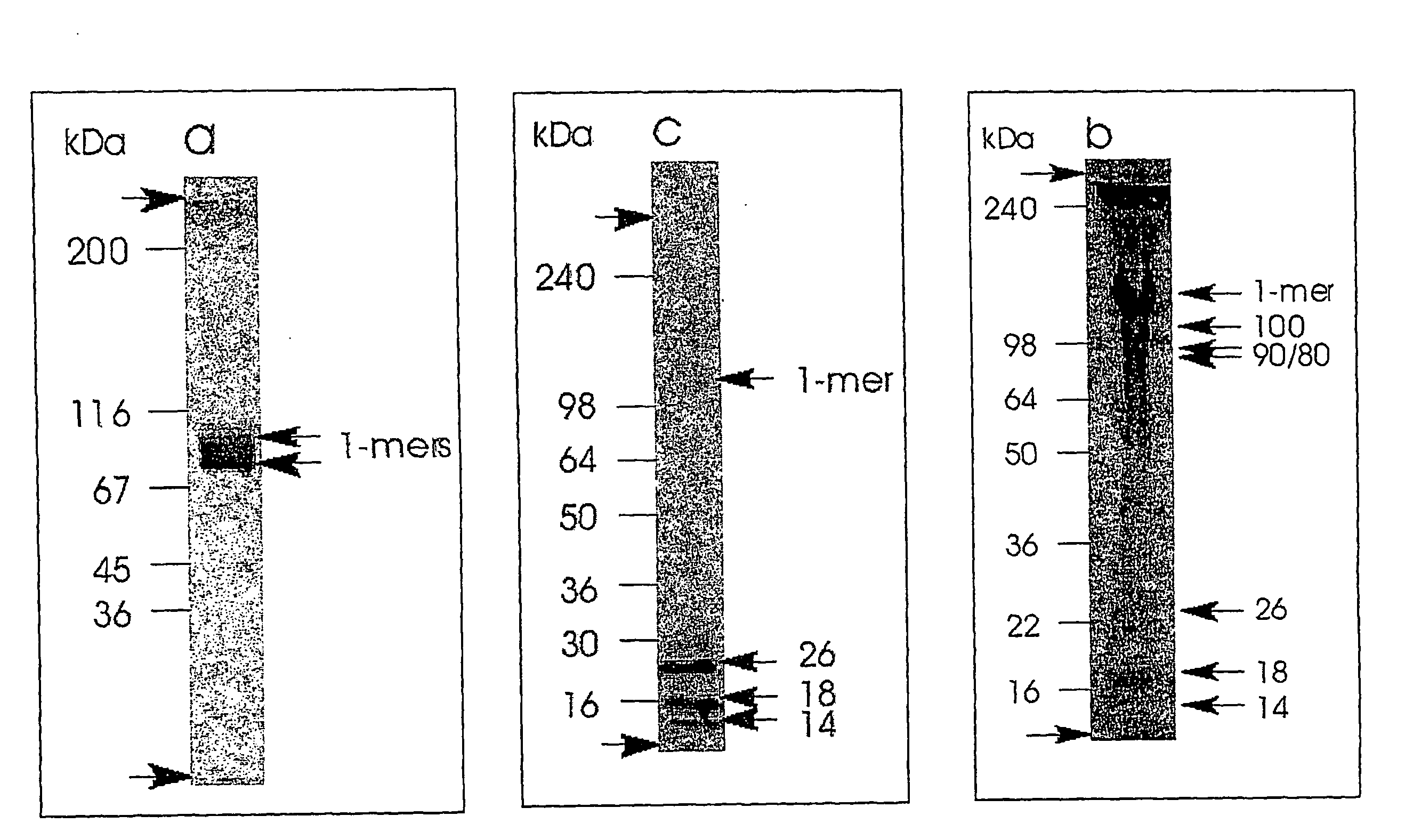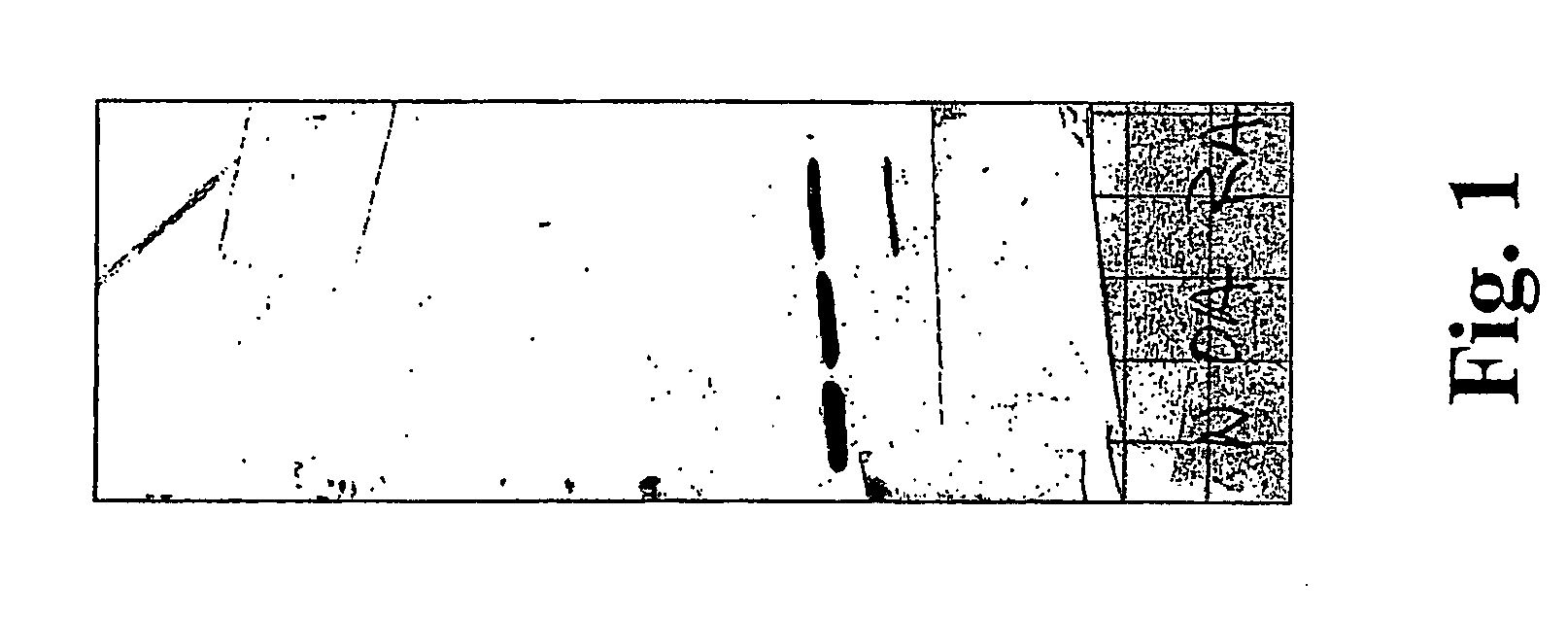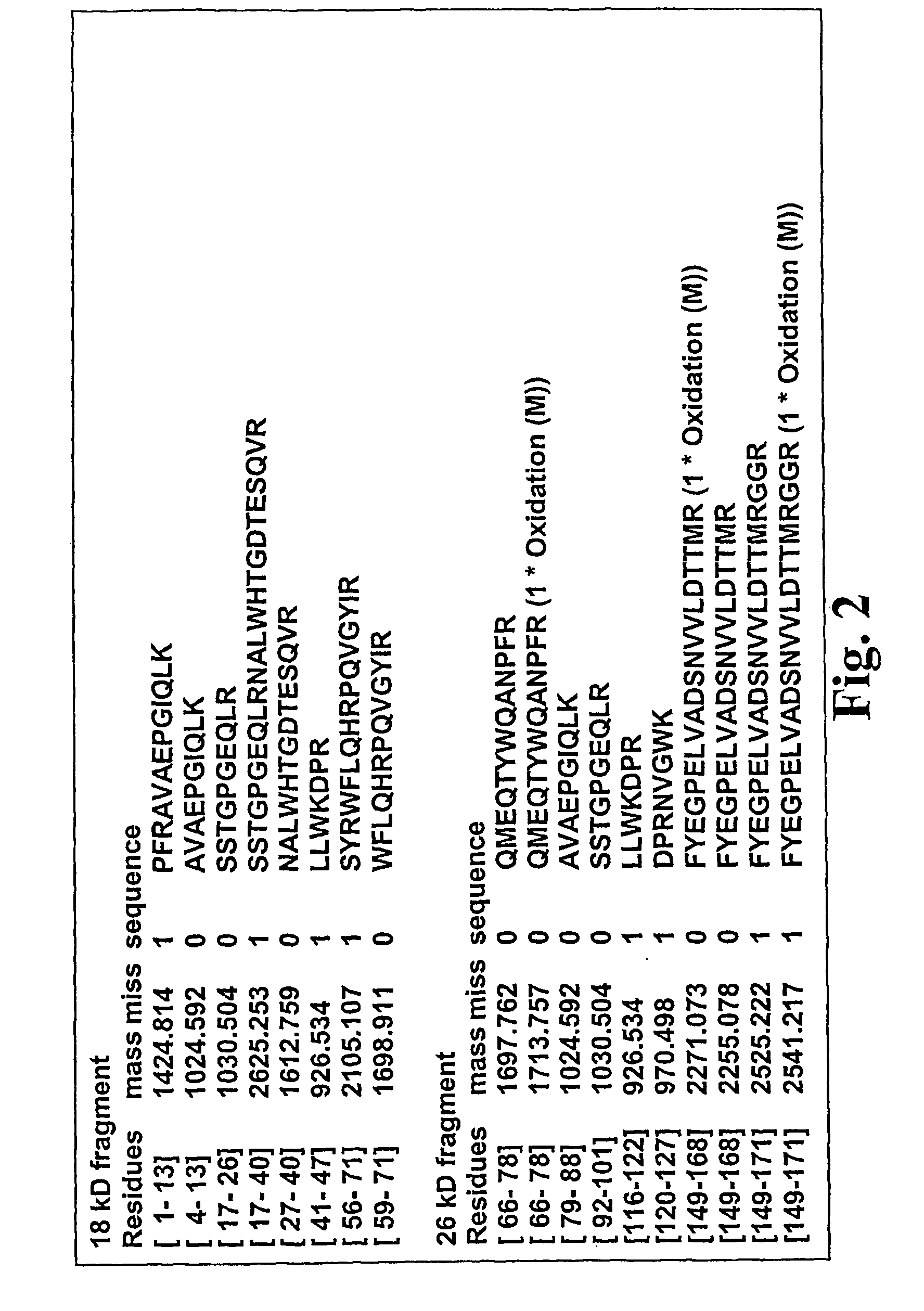Method for Determining a Tissue Degradation Process by Detection of Comp Neoepitopes
a tissue degradation and comp technology, applied in the field of tissue degradation process determination by comp neoepitopes, can solve the problems of major medical, social and economic problems such as cartilage degradation, and achieve the effect of reducing the number of reducing false positive test results, and increasing the signal to noise ratio
- Summary
- Abstract
- Description
- Claims
- Application Information
AI Technical Summary
Benefits of technology
Problems solved by technology
Method used
Image
Examples
example 1
Identification of Neoepitopes in Human COMP
[0094]Guanidine-HCl extraction of human intervertebral disc (Anulus fibrosus and Nucleous pulposus): 20 g of tissue was cut at into small pieces of approximately 1 g. Each piece of Anulus fibrosus and Nucleous pulposus was homogenised at 4° C. with a polytron homogeniser for 3×30 s in 20 mL extraction buffer of PBS at pH 7.4, Proteins were extracted for 24 h at 4° C. Additional extraction steps with PBS pH 7.4 containing 100 mM EDTA and finally with 4 M guanidinium chloride (GuHCl) in 50 mM sodium acetate (NaOAc) pH 5.8 were made. A cocktail with standard protease inhibitors were added in all extractions. After each extraction step the samples were centrifuged for 30 min at 14000 g and the supernatant was collected, i.e. 6 supernatants were obtained. The supernatant from the first PBS extraction of Anulus fibrosus contained both intact COMP and COMP fragments and this sample was use for further characterisation.
[0095]Isolation of intact and...
example 2
Neo-Epitope Antibody Production and Characterisation
Method:
[0101]Neo-epitope antibody production: The new N-terminal amino acid sequence PFRAVAE was used to synthesise a peptide to which a C-terminal cysteine was added for coupling purposes. This peptide was coupled to BSA, KLH and thiopropyl Sepharose, respectively (Schafer-N, Copenhagen, Denmark).
[0102]Five hundred micrograms of KLH conjugate was dissolved in 500 μl of PBS and then emulsified with an equal volume of complete Freund's adjuvant. New Zealand white rabbits were injected with a 500 μg dose followed by a booster injection four weeks later. Booster injections were prepared in the same manner though with incomplete adjuvant. Test bleeds were taken two to three weeks after the first boost.
[0103]Affinity purification of NeoCOMP antiserum: A six hundred microlitre (packed bed volume) column of NeoCOMP conjugated to thiopropyl sepharose was prepared in a BioRad column fitted with a 22 gauge needle to slow down the flow rate. ...
PUM
| Property | Measurement | Unit |
|---|---|---|
| Fraction | aaaaa | aaaaa |
| Fraction | aaaaa | aaaaa |
| Fraction | aaaaa | aaaaa |
Abstract
Description
Claims
Application Information
 Login to View More
Login to View More - R&D
- Intellectual Property
- Life Sciences
- Materials
- Tech Scout
- Unparalleled Data Quality
- Higher Quality Content
- 60% Fewer Hallucinations
Browse by: Latest US Patents, China's latest patents, Technical Efficacy Thesaurus, Application Domain, Technology Topic, Popular Technical Reports.
© 2025 PatSnap. All rights reserved.Legal|Privacy policy|Modern Slavery Act Transparency Statement|Sitemap|About US| Contact US: help@patsnap.com



